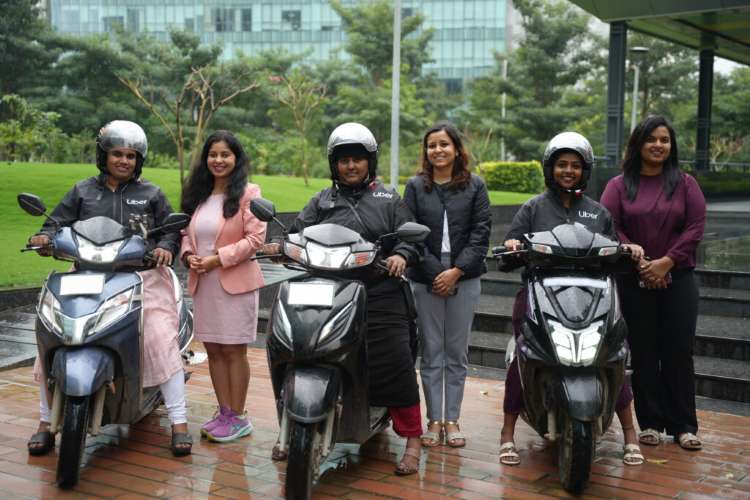
Nearly half of India’s working-age population is female, yet women form only 8–12% of gig workers. App-based gig platforms such as Swiggy, Zomato, Uber and Urban Company advertise flexibility in hours and location—conditions that, in theory, should attract women juggling paid work with unpaid care responsibilities. But reality falls short. Women remain underrepresented, prompting critics to describe the gig economy as “old wine in a new bottle,” with entrenched gender barriers dressed up in digital form.
The obstacles are multiple. Women bear a disproportionate share of household and care duties, leaving little time for work with gig platforms. Those who do join are clustered in beauty, care and domestic services, long considered “women’s work,” while men dominate ride-hailing and delivery. An ILO study across 12 countries found just 9% of delivery riders and 5% of ride-hailing drivers are women. Safety is a powerful deterrent: theft, accidents, and harassment on the road discourage participation, especially at night when incentives peak. Large platforms have lagged in complying with workplace safety requirements under India’s POSH Act (2013). Smaller women-led platforms are more sensitive to these issues, but the major players remain deficient.
READ I Green steel transition tests industry, governments
Safety Risks and Pay Gaps
Safety concerns translate directly into earnings. Women often avoid night shifts, where bonuses are concentrated, reducing incomes. The Fairwork Gender and Platform Work Report (2023) shows that the absence of living wage guarantees and poor safety measures deepen pay disparities. Many women work 50 hours a week for low returns, mirroring the conditions of traditional informal jobs: long hours, unstable incomes, and no social protection. Algorithm-driven rating systems reinforce bias, rewarding the “ideal worker”—a man, mobile and unencumbered by care responsibilities. As a result, some women drivers report working 16 hours or more a day just to stabilise earnings.

Feminist economics highlights how unpaid care work remains invisible and undervalued. The gig platforms reproduce this imbalance, adding to the “double burden” of home and work. Segmentation theory explains why women are pushed into lower-paying niches while men capture better-paying delivery and driving roles. Customer preferences and algorithmic rules act as a glass ceiling, curbing women’s mobility and earnings. Human capital theory highlights gaps in digital literacy, access to smartphones, loans and training—constraints that limit women’s ability to scale or upgrade.
Across the world, policymakers are grappling with how to classify gig workers. Spain’s “Rider Law” compels delivery platforms to treat riders as employees, while California’s AB5 sought similar protections before being diluted by Proposition 22. In the UK, courts have ruled that Uber drivers qualify as “workers” entitled to minimum wages and benefits. These developments underline how far India lags. Here, most gig platforms operate in a regulatory vacuum, with little clarity on whether workers are employees, partners, or contractors. For women, this absence of rights compounds vulnerabilities in pay, safety, and benefits.
Evidence from the field
The data is stark. NITI Aayog estimates women accounted for just 7.7 million gig workers in 2020–21, projected to rise to 23.5 million by 2029–30, but without closing the gender gap. Oxfam (2022) found fewer than one-third of women own mobile phones, compared to over 60% of men—a digital divide that bars entry. Protests by Urban Company’s women workers underscored these realities: they demanded fairer wages, lower commissions and transparency. The agitation forced a reform plan that capped commissions and offered modest concessions. Yet systemic inequities in pay, safety and work allocation persist.

Another missing piece is the rise of collective action. Gig workers, once thought to be too dispersed to organise, have begun forming associations to demand transparency, lower commissions, and fairer contracts. Women-led protests at Urban Company were one example, but similar stirrings are visible among food delivery riders and cab drivers. These movements challenge the myth of gig work as individual entrepreneurship and highlight the need for collective bargaining rights. For women, whose bargaining power is further weakened by domestic constraints, unionisation offers one of the few levers to negotiate better conditions.
For gig platforms to be truly inclusive, three priorities stand out. First, safety: no mandatory night shifts, safer commuting arrangements, and proper redress systems under POSH norms. Second, care support: childcare and eldercare options to ease women’s double burden. Third, digital access and fair algorithms: affordable smartphones, digital skills training, and transparent data on how work and earnings are distributed. Supporting women-led cooperatives can also provide fairer ownership and better conditions. Finally, gig workers must be integrated into India’s social security net under the Code on Social Security (2020), with access to maternity benefits, insurance and pensions.
Without reform, the gig economy risks entrenching old inequalities in a digital shell — “old wine in a digital bottle.” With better safeguards, platforms could expand women’s participation and transform gig work into a genuine avenue of empowerment. Without them, it remains another chapter in India’s long story of informalisation and gender exclusion.
Devangi Dugar is a B.Sc Economics student, and Parul Oberoi is Assistant Professor of Economics, School of Social Sciences, CHRIST University, Delhi NCR Campus.
